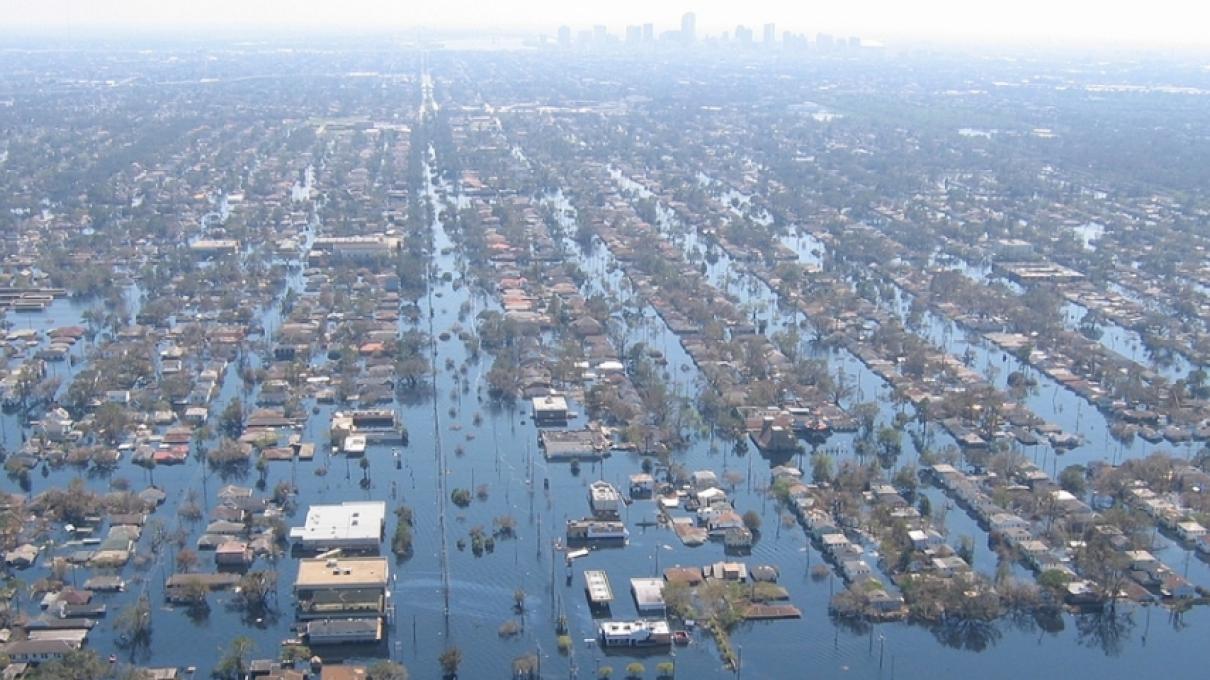The Adaptation Blueprint

Successful climate change adaptation requires a national reckoning. The ways in which the effects of climate change impact everyone, in cities and regions of different scales, income brackets, on the coast and inland, must be acknowledged for adaptation to be successful. It also requires novel solutions from a range of different disciplines. The McHarg Center, Wharton Risk Management and Decision Processes Center, and the MIT Norman B. Leventhal Center for Advanced Urbanism recently convened The Adaptation Blueprint, a one-day summit at the University of Pennsylvania that brought together designers, planners, and policymakers to address the shortcomings of adaptation planning to date and propose progressive solutions. A cohort of MIT faculty, researchers and alums joined in panels focused on best practices and multidisciplinary knowledge transfer, and concluded with a broad discussion of common barriers, potential for collaboration, and next steps.
In the first panel, “New Approaches to Designing and Implementing Coastal Resilience,” speakers Rafi Segal (MIT) and Karen M’Closkey (PennDesign) stressed that design is only an effective tool for change when it is contextualized in terms of the political, economic, and social realities of a place. Adaptation is not solely a land use issue; rather, it will dictate the livelihoods and living situations of millions of people across the county. After highlighting the ways in which climate change will affect all aspects of life in cities, panelist Mattijs Bouw (PennDesign) proposed the need for a national acknowledgement of the pervasiveness of the problem before adaptation planning may be successful on a wide scale.
Alan Berger (MIT), moderator of the second panel “Planning the Next Generation of Coastal Communities,” began the session by challenging the physical planning process to begin by asking who stands to benefit or suffer from climate change and adaptation. Sam Brody (Texas A&M Galveston) demonstrated current shortcomings in communicating risk in places like Houston and illustrated how web-based tools can be used to effectively communicate risk to the public. Fadi Masoud (University of Toronto) proposed a radical new approach to zoning based on dynamic flood risk using Miami as a case study. Allison Lassiter (PennDesign) traced the relationship between water use in coastal cities and the intrusion of saline water in municipal drinking water supply. Ellen Neises (PennDesign) summed up the difficulty planners face in implementing progressive change in a time of uncertainty concluding that, “future planning is a negotiation.” Conference participants identified the need to develop a national database of vulnerable places and shovel-ready projects so that when the opportunity arises equitable adaptation may be pursued.
Panelists in the third session, “Innovative Policy and Finance for Coastal Adaptation,” discussed various barriers and opportunities that exist at the municipal level. Ann Phillips (Center for Climate & Security) traced how coastal cities often find themselves vying for state or federal funding instead of facing shared issues together. Thomas Ruppert (Florida Sea Grant) explained that given limited funding and political considerations, municipal decision-makers are often risk averse. Small and mid-sized cities receive less attention and interest from funders and designers, yet are home to the majority of vulnerable populations across the country. Carlos Martin (Urban Institute) maintained hope that despite these challenges, a large proportion of adaptation funding comes from municipal bonds, and residents are increasingly willing to support adaptation policy when given the chance.
“We’re in a triage moment,” closing keynote speaker Jeff Goodell warned, as a profession, society, and as individuals. The rate and scale of climate change will likely not diminish, leaving designers, planners, and policymakers with the increasingly difficult task of deciding how to respond, and at what scale. Participants framed this reality of change as both an imperative and opportunity to shape adaptation planning practice. The Adaptation Blueprint served as a forum to name the barriers to adaptation planning and form a bridge between institutions and disciplines. It marks the beginning of the collaborative pursuit of a progressive, equitable adaptation planning.
Hurricane Katrina flooding in New Orleans (Credit: NOAA)


